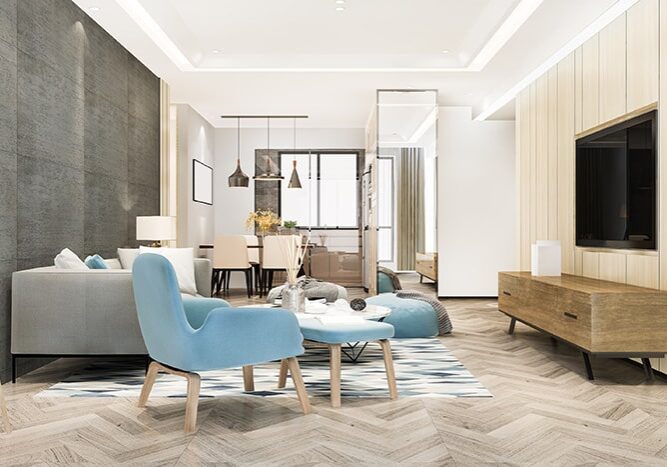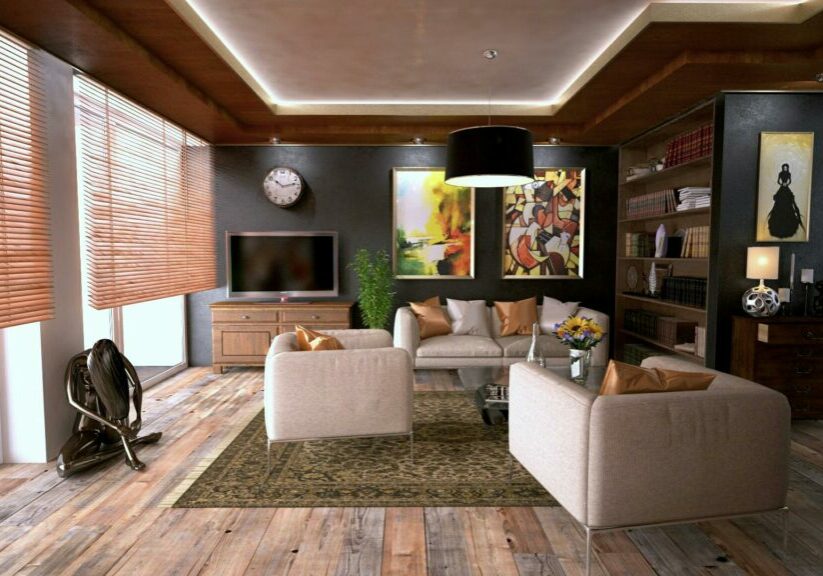Interior Design Budget Template: The Questions That Make Or Break Your Project Budget
Creating an interior design budget template involves more than just listing furniture costs and adding your design fee. Whether you’re working on a full home renovation or a single-room refresh, asking the right questions early saves both time and money. These questions form the foundation of every successful project budget.

DEFINING PROJECT SCOPE
Before opening your QBO or setting up budget trackers, you need crystal clear answers to these fundamental questions. They shape every financial decision that follows.
“What’s Included – and What Isn’t?”
This question prevents scope creep and protects your profit margins.
Start by breaking down:
- Installation and Delivery
- Will items be delivered to a warehouse or directly to the site?
- Who handles last-mile delivery?
- Are assembly services needed?
- Do you need specialized installers?
- Project Management – Your time managing contractors, vendors, and deliveries impacts the budget significantly. Consider:
- How many vendors will you coordinate?
- What’s the estimated timeline for management?
- Will you need additional staff support?
- How many site visits are required?
- Additional Services – Many projects require services beyond basic design work:
- CAD drawings or 3D renderings
- Contractor coordination
- Permit management
- Purchasing management
Document these decisions in Houzz Pro to track both included and excluded items throughout the project.
“When Does This Need to Be Completed?”
Timeline impacts budget in ways many clients don’t realize. Rush fees, expedited shipping, and overtime labor can quickly erode profit margins. Consider:
- Lead Times
- Standard product availability
- Custom item production times
- Shipping and delivery windows
- Installation scheduling
- Timeline Constraints – Timeline constraints play a crucial role in budget planning. Building access restrictions might require after-hours work at premium rates, while contractor availability can affect your project schedule and costs. Material lead times vary significantly, especially for custom items, and seasonal considerations can impact both pricing and installation schedules.
“Who Needs to Be Involved?”
Project complexity often correlates with the number of involved parties. Track roles and responsibilities:
- Primary Team Members
- Interior designer and staff
- Project manager
- Procurement specialist
- Installation coordinator
- Supporting Professionals
- General contractor
- Electrician
- Plumber
- HVAC specialist
- Custom fabricators
BUILDING YOUR BUDGET STRUCTURE
Creating an accurate budget requires understanding both obvious and hidden costs. Your financial framework supports both project success and business profitability.
“What’s the True Bottom Line?”
Moving beyond simple furniture and décor costs, comprehensive budgets include several layers of expenses. Working with CFO Services helps identify often-overlooked costs like:
- Hard Costs
- Furnishings and materials
- Custom fabrication
- Installation labor
- Delivery fees
- Sales tax considerations
- Contractor expenses
- Specialized equipment rental
- Soft Costs
- Design fees
- Project management time
- Administrative support
- CAD/rendering services
- Photography
- Insurance requirements
- Travel expenses
- Hidden Costs – Hidden costs can quickly accumulate if not properly anticipated. Storage fees and rush charges often surprise new designers, while sample costs and courier services add up over the project timeline. Don’t forget to account for practical necessities like parking fees, site access permits, waste removal, and protective materials. Working with CFO Services helps identify and plan for these often-overlooked expenses.
“How Should We Structure Payment Milestones?”
A well-planned payment schedule maintains healthy cash flow while aligning with project phases. Consider:
- Design Fee Structure
- Initial retainer amount
- Progress payments
- Final payment timing
- Additional service rates
- Product Payment Planning
- Vendor deposit requirements
- Balance due timelines
- Storage fee considerations
- Installation payment schedules
Using QBO helps track these payment milestones and automatically notify you when they’re approaching. This integration with your project management software ensures you never miss a payment deadline or milestone.
“What’s Our Contingency Plan?”
Every project needs a financial buffer. Professional budgets typically include:
- Standard Contingencies
- 10-15% for furnishings and materials
- 15-20% for renovation components
- Additional padding for custom items
- Buffer for shipping rate fluctuations
- Risk Management
- Change order procedures
- Client approval processes
- Vendor backup options
- Installation contingencies
MAKING YOUR BUDGET WORK
Even the most detailed budget only serves its purpose when properly implemented. These questions address the practical aspects of budget management throughout your project.
“How Will We Track Expenses?”
Accurate expense tracking affects both project profitability and client trust. The best design firms use integrated systems for real-time monitoring:
- Digital Tracking Systems – Implementing QBO transforms how you track project finances. Real-time expense monitoring gives you instant visibility into project costs, while automated payment reminders help maintain healthy cash flow. Client payment tracking and profit margin analysis provide crucial insights into project performance. Plus, having organized tax documentation saves considerable time and stress during tax season.
- Project-Specific Tracking – Break down expenses by:
- Room or space
- Category (furniture, lighting, décor)
- Vendor
- Installation phase
- Custom versus ready-made items
“How Will We Manage Procurement?”
Procurement management directly impacts your bottom line. Use software to help streamline:
- Order Management
- Purchase order creation and tracking
- Vendor communication logs
- Delivery scheduling
- Installation coordination
- Budget Alignment
- Price changes monitoring
- Markup calculations
- Shipping cost tracking
- Change order documentation
“Who Handles Financial Approvals?”
Clear approval processes prevent budget overruns and maintain client satisfaction:
- Client Approvals
- Initial budget sign-off
- Change order procedures
- Additional service requests
- Upgrade authorizations
- Internal Approvals – Working with CFO Services helps establish:
- Spending thresholds
- Emergency purchase procedures
- Vendor payment authorizations
- Contract modifications
PRESENTING AND MANAGING YOUR BUDGET
Clear budget communication sets expectations and prevents misunderstandings. Professional budget presentations build trust and demonstrate your business acumen.
“How Will We Present the Budget?”
Budget presentation impacts client understanding and project approval. Consider both format and content:
- Digital Presentation – Modern budget presentations include:
- Itemized spreadsheets
- Visual breakdowns
- Payment schedules
- Project timelines
- Budget Categories – Organize your budget into clear sections:
- Design fees and services
- Furnishings by room
- Custom elements
- Installation costs
- Contingency allocations
“How Do We Handle Changes?”
Change management affects both budget and client relationships:
- Change Order Process
- Written documentation requirements
- Cost impact analysis
- Timeline implications
- Approval procedures
- Budget Adjustments – Track modifications using:
- Running total updates
- Revised payment schedules
- Modified delivery timelines
- Updated project milestones
“What If We Go Over Budget?”
Having clear procedures for budget overages protects both you and your client:
- Prevention Strategies
- Regular budget reviews
- Early warning systems
- Alternative options ready
- Value engineering plans
- Solution Framework
- Identify overage causes
- Present multiple solutions
- Document decisions
- Update project timeline
MAKING YOUR TEMPLATE WORK
Creating a budget template is just the beginning. Successful implementation requires consistent monitoring and adjustment throughout your project.
Setting Up Your Budget Template
Your budget template should grow with your business. Professional designers use integrated systems that combine QBO for financial tracking with project management tools like Houzz Pro for comprehensive oversight.
- Core Template Components
- Project Information Block
- Client Details and Contacts
- Room-by-Room Breakdown
- Product and Service Categories
- Timeline Milestones
- Payment Schedule
- Budget Monitoring – Start with weekly financial reviews to catch any issues early, then conduct deeper monthly profit analyses to understand project performance. Quarterly template updates keep your systems current with market changes and business growth. Annual rate evaluations ensure your pricing remains competitive while maintaining profitability. This structured approach to financial management helps prevent budget overruns while maximizing project profits.
Common Budget Pitfalls to Avoid
Understanding common budget challenges helps prevent costly mistakes:
- Underestimating Time Requirements – Many designers focus solely on product costs while overlooking time investments:
- Client meetings
- Vendor coordination
- Installation oversight
- Project management
- Markup Miscalculations – Protect your profits by properly structuring:
- Product markups
- Service fees
- Rush charges
- Custom item pricing
When to Seek Professional Support
Complex projects often benefit from professional financial guidance. Consider working with CFO
Services when:
- Scaling your business
- Managing multiple large projects
- Implementing new financial systems
- Planning for business growth
Professional support helps:
- Optimize pricing structures
- Improve cash flow
- Maximize profitability
- Ensure IRS compliance
FUTURE-PROOFING YOUR BUDGET TEMPLATE
Creating a sustainable budget template means building flexibility for different project types and evolving business needs.
Adapting Your Template
Different projects require different budget approaches. Your template should accommodate:
- Residential Projects
- Room-by-room breakdowns
- Furniture packages
- Décor allocations
- Installation scheduling
- Commercial Projects
- Phase-based budgeting
- Multiple contractor coordination
- Extended timelines
- Larger procurement volumes
BUDGET TEMPLATE IN ACTION
Real-world application of your budget template requires:
- Regular Reviews
- Monthly financial assessments
- Quarterly template updates
- Annual rate evaluations
- Market comparisons
- Professional Development – Stay current with:
- Industry pricing trends
- Software updates
- Financial regulations
- Market conditions
Final Thoughts and Next Steps
Creating an effective budget template takes time, but the investment pays off through:
- Smoother project management
- Better client relationships
- Increased profitability
- Reduced stress
Ready to implement your new budget template? Start by:
- Reviewing current project budgets
- Setting up professional tracking systems
- Consulting with CFO Services for optimization
- Establishing regular review schedules
Remember, your budget template should evolve with your business. Regular updates and professional guidance ensure it continues to serve your needs effectively.
Whether you’re managing your first major project or scaling your design firm, contact us today to learn how we can help optimize your budget templates and financial workflows. Let’s work together to create a budgeting system that grows with your business.
FAQs
How detailed should my budget template be?
Include line items for every expense category, from obvious costs like furniture to often-forgotten items like delivery fees and storage costs.
Should I use different templates for residential and commercial projects?
Yes – while the basic structure remains similar, commercial projects need additional categories for phasing, contractor coordination, and extended timelines.
What’s the best way to present a budget to clients?
Present budgets in both detailed spreadsheet form and visual summaries, clearly showing cost breakdowns and payment schedules.
Should I include my design fee in the main budget?
Yes, clearly outline your design fee structure separately from product and service costs for transparency.
When should I bring in professional financial help?
Consider CFO Services when scaling your business, managing multiple large projects, or implementing new financial systems.
How do I handle product price increases after budget approval?
Include a price fluctuation clause in your agreement and maintain open communication with clients about potential changes.
Share On:



